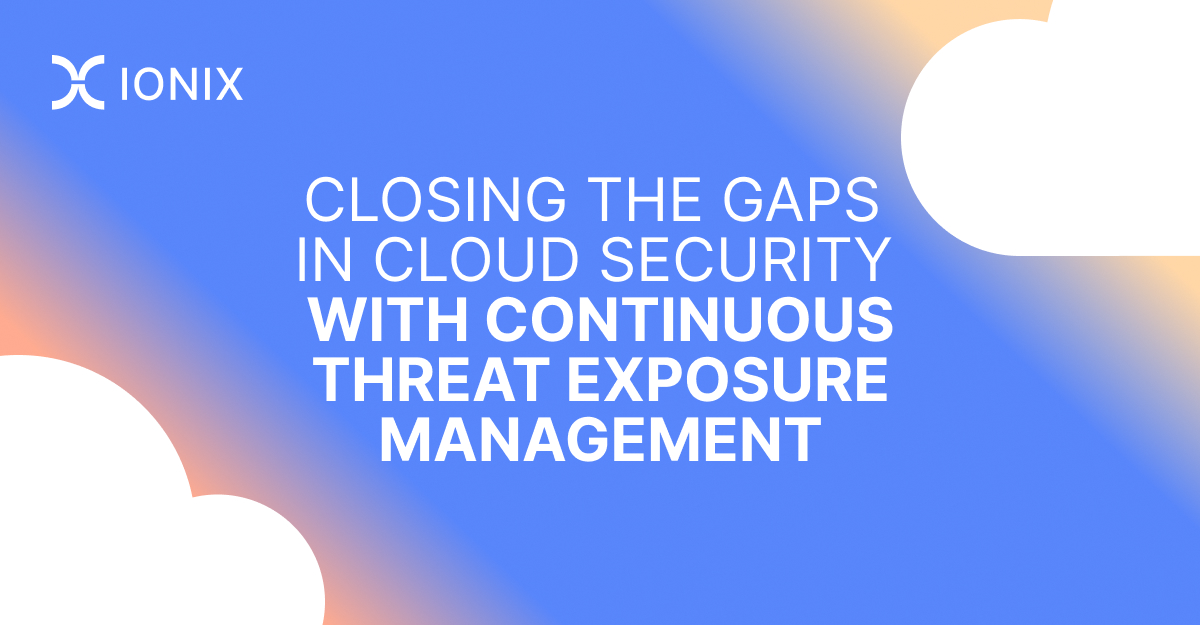CTEM: Closing the Cloud Security Gap

In today’s rapidly evolving threat landscape, traditional reactive security approaches are no longer sufficient. This reality led Gartner to introduce Continuous Threat Exposure Management (CTEM) to shift organizations’ mindset from reactive firefighting to proactive threat management through five critical phases:
- Scoping: Identifying what needs protection.
- Discovery: Finding vulnerabilities before attackers do.
- Prioritization: Focusing on the threats that matter most.
- Validation: Testing whether vulnerabilities pose real-world risks.
- Mobilization: Taking action to protect assets effectively.
This structured approach revolutionizes how organizations secure their cloud environments. But to succeed, CTEM demands specialized tools designed for modern cloud complexities.
The Cloud Security Paradox: Why Traditional Tools Fail
As businesses accelerate their adoption of cloud-native architectures, they create dynamic, ever-changing environments that traditional security tools cannot keep up with. Here’s why:
1. The Shadow IT Blindspot
Business units frequently spin up new cloud resources outside the visibility of security teams. While CSPMs may monitor known assets, how many unknown resources are running in your environment right now? Each unmanaged asset widens your security gap.
2. The Dependency Dilemma
Cloud applications often rely on a web of interconnected services, from APIs to third-party integrations. Traditional tools may flag individual vulnerabilities but fail to see the bigger picture. A low-risk vulnerability could become catastrophic when linked to hidden dependencies.
3. The False Priority Trap
Many risk assessment methods rely solely on internal metrics, overlooking the attacker’s perspective. As a result, teams waste resources addressing low-priority issues while real external exposures remain unaddressed.
4. The Validation Vacuum
CSPMs don’t validate the exploitability of vulnerabilities. On their next scan, they simply ensure the specific issue isn’t detected again, lacking the capability to differentiate between theoretical risks and real dangers.
Bridging the Gaps: Making CTEM Work for Cloud with IONIX
CTEM provides the roadmap, but implementing it effectively requires tools tailored to the unique challenges of cloud environments. This is where IONIX can help, offering the tools to address the limitations of traditional solutions.
1. Comprehensive Visibility with Cloud Cross-View (CCV)
IONIX’s Cloud Cross-View (CCV) goes beyond CSPM by correlating data from multiple sources—cloud providers, third-party APIs, and network traffic—to provide a unified view of all assets, managed and unmanaged. CCV integrates telemetry from IAM policies, container registries, and workload activity, ensuring complete and continuous visibility across your cloud estate.
2. Advanced Dependency Mapping
IONIX’s asset mapping technology leverages graph databases to uncover the relationships between cloud resources, APIs, and dependencies. This includes tracking third- and fourth-party integrations often missed by traditional discovery tools. The graph-based approach enables real-time visualization of how vulnerabilities propagate across interconnected systems.
3. Attack-Informed Prioritization
The IONIX Cloud Exposure Validator integrates threat intelligence feeds, attacker TTPs (Tactics, Techniques, and Procedures), and contextual risk scoring to prioritize vulnerabilities based on real-world exploitability. By simulating potential attack paths, it ensures your security team focuses on risks that matter most, eliminating noise and reducing alert fatigue.
4. Real-World Validation Through Exploitation Testing
Validation moves beyond theoretical scoring with automated exploitation testing. IONIX identifies active attack paths and tests them using real-world payloads in a controlled environment. This ensures only exploitable vulnerabilities are prioritized, providing a clear path to remediation.
The Path Forward: Transforming Cloud Security with CTEM
As cloud environments grow more complex, the risks of traditional security approaches grow more dangerous. CTEM isn’t just another framework—it’s a new way of thinking about cloud security, shifting from reactive to proactive and from theoretical to practical.
With IONIX’s advanced tools and methodologies, organizations can bridge the critical gaps in visibility, prioritization, and validation, transforming their cloud infrastructure into a resilient fortress against emerging threats.
Ready to Close Your Cloud Security Gaps?
Start your CTEM journey today with IONIX. Schedule a demo to explore how our cutting-edge solutions provide complete visibility, dependency insights, real-world validation, and automated remediation for your cloud environment.






